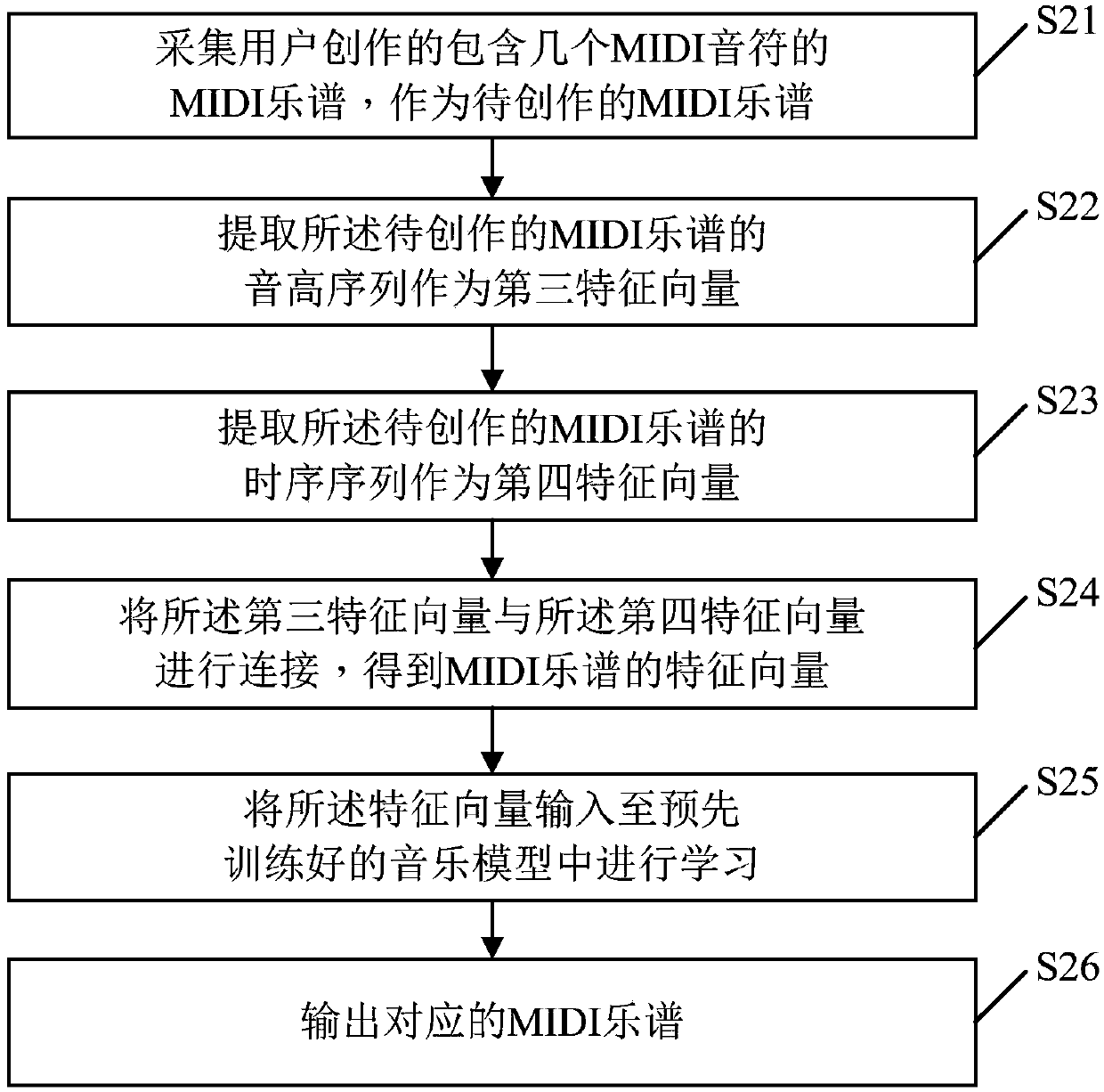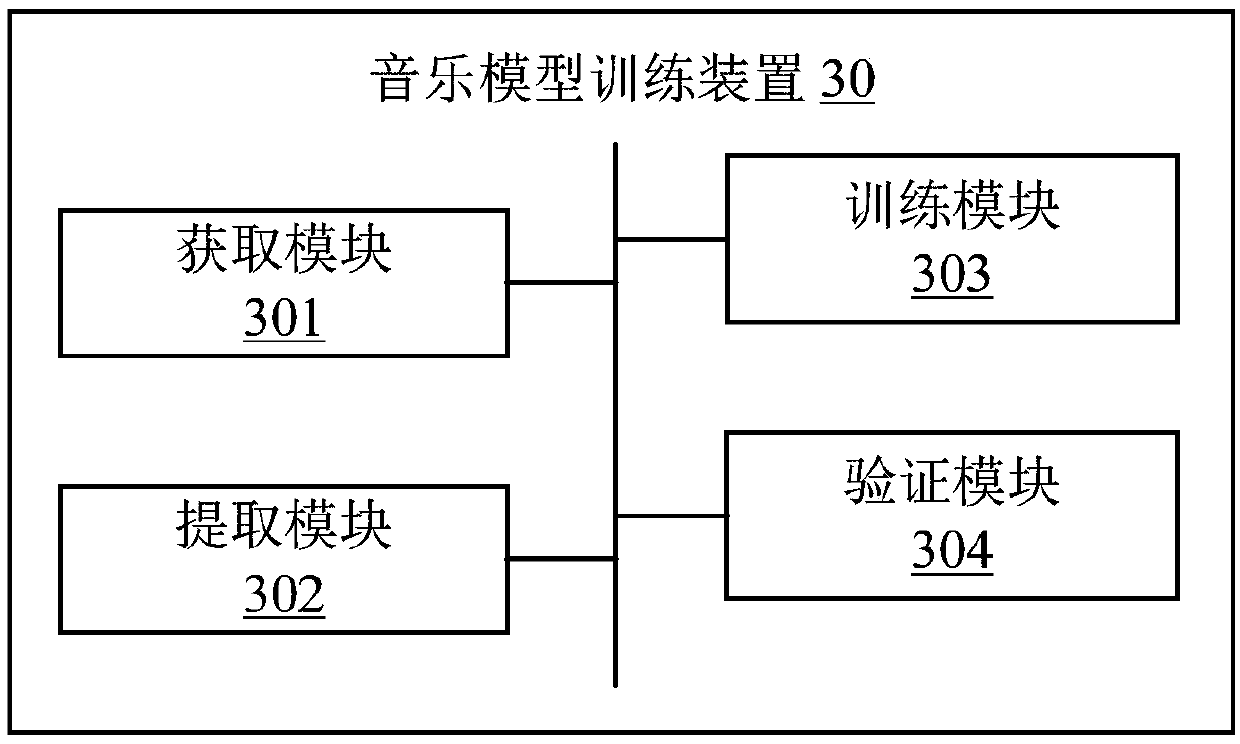Music model training method, music creation method, devices, terminal and storage medium
A technology for model training and music, applied in computing models, electroacoustic instruments, computing, etc., can solve problems such as labor consumption, reduce creation costs, improve feature extraction capabilities, and improve work efficiency.
- Summary
- Abstract
- Description
- Claims
- Application Information
AI Technical Summary
Problems solved by technology
Method used
Image
Examples
Embodiment 1
[0063] figure 1 It is a flowchart of the music model training method provided in the first embodiment of the present invention. According to different needs, the execution order in this flowchart can be changed, and some steps can be omitted.
[0064] S11. Obtain a MIDI music data set, where the MIDI music data set includes multiple MIDI scores.
[0065] MIDI (Musical Instrument Digital Interface) is the most widely used music standard format in the composer world. It can be called a "computer understandable score". It uses digital control signals of musical notes to record music. What MIDI transmits is not sound signals, but instructions such as notes and control parameters. It instructs the MIDI device what to do and how to do it, such as which note to play, how loudly, what pitch to end, what accompaniment to add, and so on. That is, MIDI data includes: MIDI channels, sending information such as time, pitch, velocity, volume, and reverberation of a certain musical instrument to...
Embodiment 2
[0135] figure 2 It is a flowchart of the music creation method provided in the second embodiment of the present invention. According to different needs, the execution order in this flowchart can be changed, and some steps can be omitted.
[0136] S21. Collect a MIDI score composed of several MIDI notes created by the user as the MIDI score to be created.
[0137] The user can play several notes at will on the piano, and when the user has played a few notes, he can stop playing. At this time, the several notes are collected and inputted into the pre-trained music model. You can play a complete piece of music by yourself.
[0138] S22. Extract the pitch sequence of the MIDI score to be created as a third feature vector.
[0139] S23. Extract the time sequence sequence of the MIDI score to be composed as a fourth feature vector.
[0140] S24. Connect the third feature vector and the fourth feature vector to obtain a feature vector of the MIDI score.
[0141] If the method of sequential c...
Embodiment 3
[0150] image 3 It is a functional block diagram of a preferred embodiment of the music model training device of the present invention.
[0151] In some embodiments, the music model training device 30 runs in a terminal. The music model training device 30 may include multiple functional modules composed of program code segments. The program code of each program segment in the music model training device 30 can be stored in a memory and executed by at least one processor to execute (see figure 1 And related descriptions) training of music models.
[0152] In this embodiment, the music model training device 30 of the terminal can be divided into multiple functional modules according to the functions it performs. The functional modules may include: an acquisition module 301, an extraction module 302, a training module 303, and a verification module 304. The module referred to in the present invention refers to a series of computer program segments that can be executed by at least on...
PUM
 Login to View More
Login to View More Abstract
Description
Claims
Application Information
 Login to View More
Login to View More - R&D
- Intellectual Property
- Life Sciences
- Materials
- Tech Scout
- Unparalleled Data Quality
- Higher Quality Content
- 60% Fewer Hallucinations
Browse by: Latest US Patents, China's latest patents, Technical Efficacy Thesaurus, Application Domain, Technology Topic, Popular Technical Reports.
© 2025 PatSnap. All rights reserved.Legal|Privacy policy|Modern Slavery Act Transparency Statement|Sitemap|About US| Contact US: help@patsnap.com



